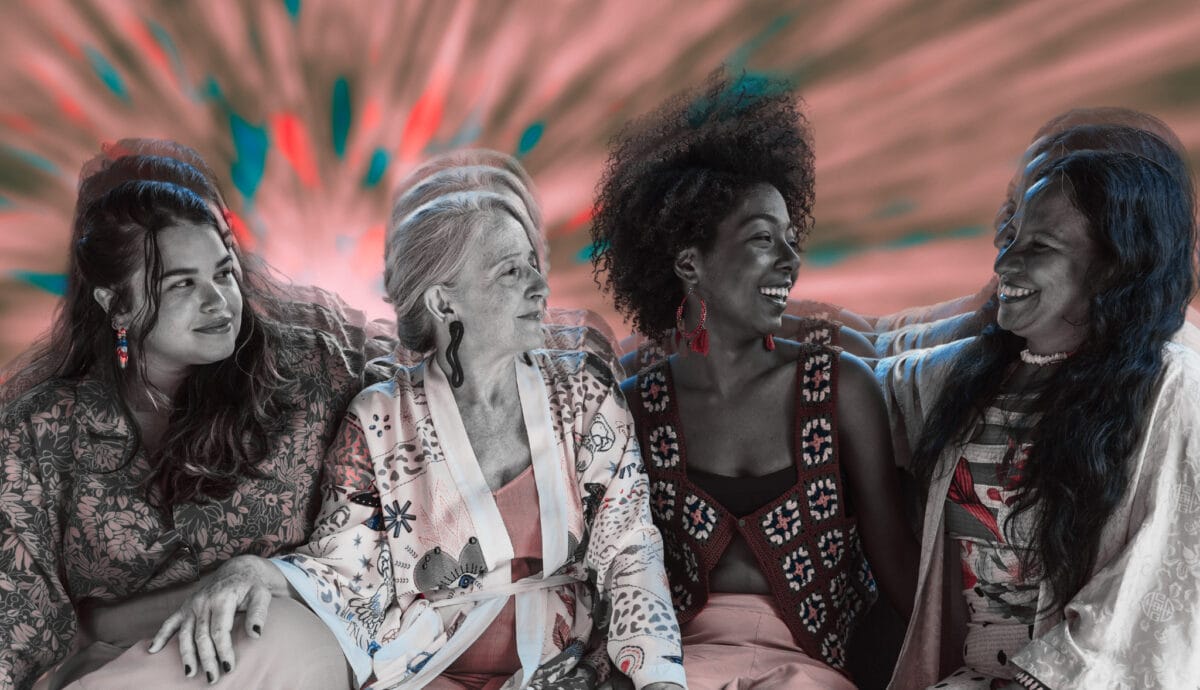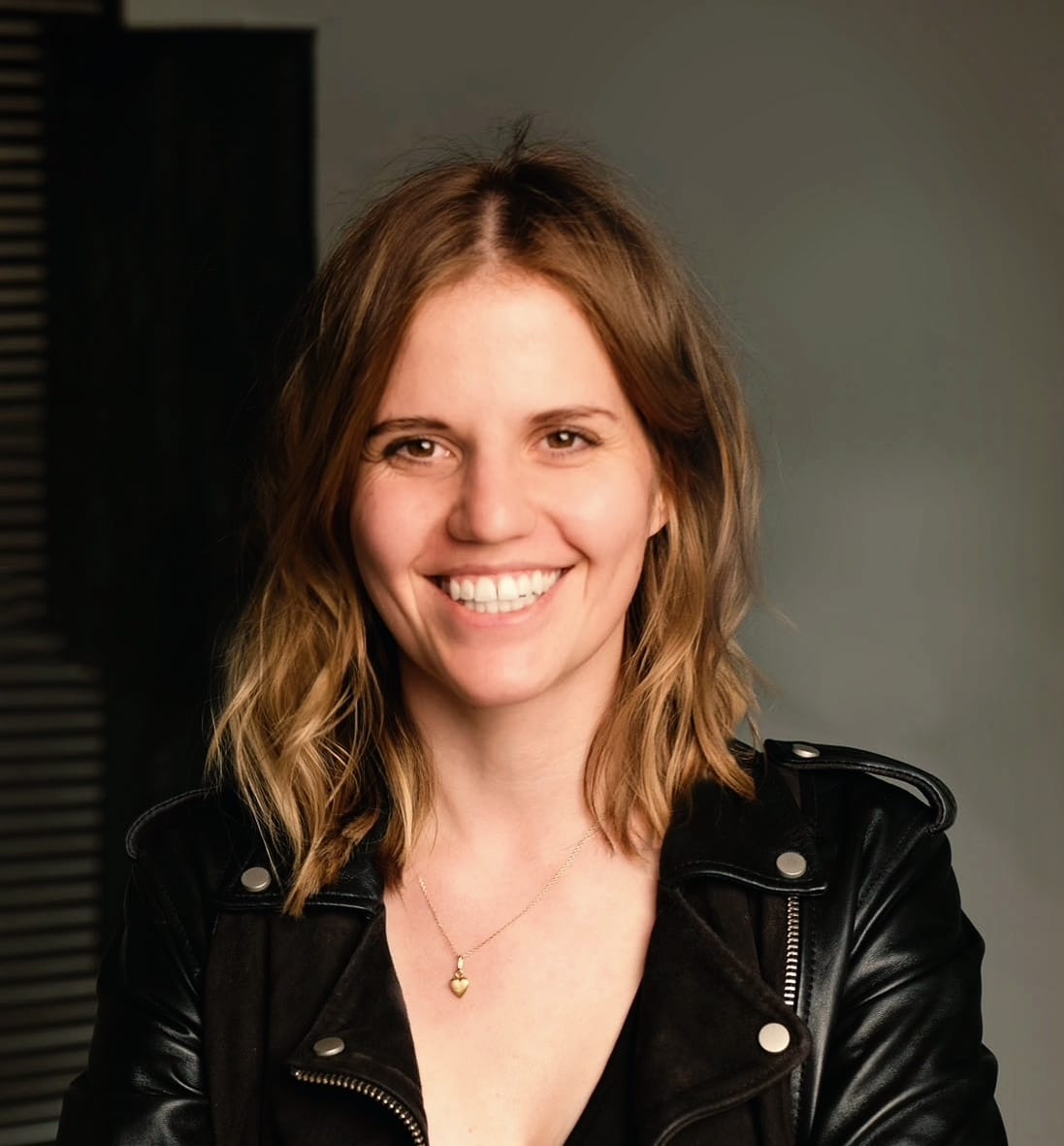Do women respond differently to psychedelics than men? And, if so, how are their needs different when approaching these powerful substances?
While crucial research is still limited to help us understand how and why the psychedelic experience might vary vastly among genders, the rise of female-only retreats, clinical settings, and thoughtfully designed psychedelic products and services, are helping provide women safer, more inclusive, and empowering psychedelic experiences.
The Need to Focus on the Female Experience
In an article in MIT Technology Review focusing on women and psychedelics, Juan Pablo Cappello, co-founder and CEO of the ketamine therapy platform Nue Life said, “We started our company knowing that women over 40 are prescribed antidepressants at more than three to four times the rate of men, which has led to one in every five women taking an antidepressant to get through the day.”
Gender differences in the effects of psychedelics remain a topic of mixed evidence, necessitating further investigation. Nevertheless, gender-specific challenges persist. Safety concerns, childcare responsibilities, and the stigma linked to drug use are among women’s hurdles within the psychedelic landscape.
The redesign of healthcare services should prioritize women’s needs. Women frequently experience misdiagnosis and dismissive treatment from healthcare providers, emphasizing the urgency for a more attentive and responsive approach.
One aspect that merits attention is the potential impact of hormonal fluctuations on women’s psychedelic experiences. The menstrual cycle, pregnancy, and menopause can influence the subjective effects and therapeutic outcomes of psychedelics, underscoring the need for tailored research that considers these hormonal factors. Moreover, societal expectations and gender norms place pressure on women, shaping their experiences and interpretations of psychedelic encounters. The struggle to balance femininity, career, and family life can affect a woman’s sense of self and her ability to fully engage in the transformative potential of psychedelics.
With psychedelics being non-specific amplifiers, the external setting, the internal set — the mindset and psychological preparedness of the individual — plays a pivotal role. Women may face self-doubt, fear of losing control, or concern about exposure to vulnerable emotions during psychedelic experiences. Carhart-Harris et al. have emphasized the importance of context, including internal barriers that could potentially hinder the therapeutic benefits of the journey.
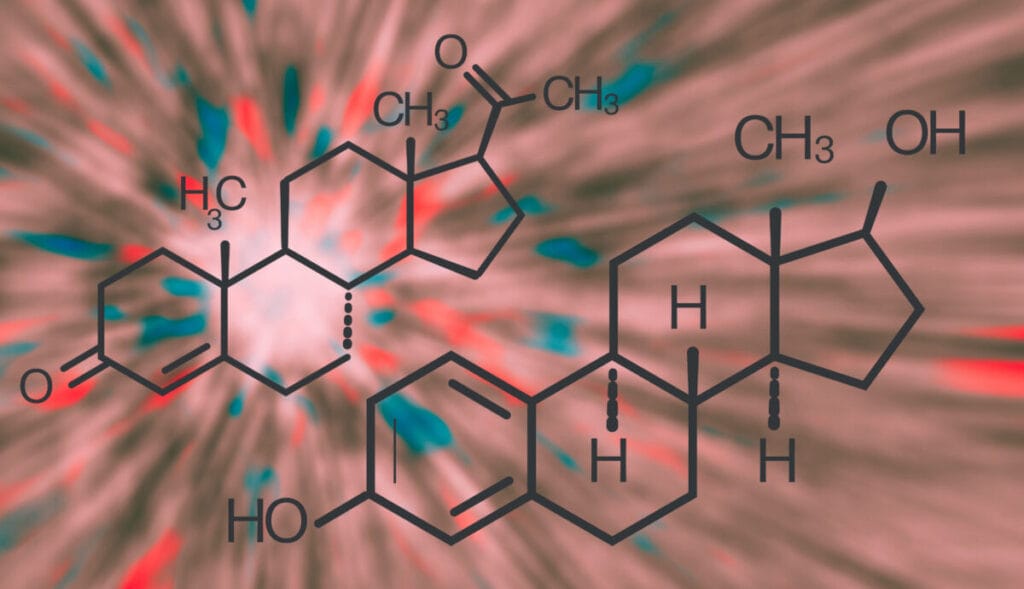
Underrepresentation and Male Dominance
Historically, women have been underrepresented in clinical trials across various therapeutic areas, and psychedelics are no exception. For example, the term “inclusion of women” refers to the legal mandate outlined in the National Institutes of Health Revitalization Act of 1993, which requires the involvement of women as subjects in clinical research. This mandate applies to all clinical research funded by NIH unless it is deemed “inappropriate with respect to the health of the subjects,” “inappropriate with respect to the purpose of the research,” or “inappropriate under such other circumstances as the Director of NIH may designate.”
This gender bias limits our understanding of the specific effects, safety profiles, and therapeutic outcomes of psychedelics for women. The limited diversity among research participants has considerable implications for the generalizability and dissemination of treatments. Research suggests that women may exhibit different responses to psychedelics compared to men.
For example, a recent article examined the adverse effects of drugs targeting serotonin GPCRs in the CNS and PNS. These drugs interact with serotonin GPCRs in the brain and various peripheral areas, potentially causing side effects. Estrogen, which is more prevalent in women, influences serotonin synthesis and receptor densities, and drugs targeting serotonin GPCRs disrupt this process. The periodic increase in estrogen levels and the interference with the serotonin system mediated by estrogen could explain why women experience more adverse effects. Women also have lower serotonin concentrations and faster serotonin metabolism than men, which may contribute to the observed differences.
Biological factors, such as hormonal fluctuations, make research on women more complex and, therefore, more expensive. This highlights the necessity of considering gender as a factor in understanding the impact of psychedelics on mental health and well-being. Menstrual cycles, pregnancy, and menopause can influence the subjective effects and therapeutic outcomes of psychedelics. It is also worth consideration that many women experience disruptions in their menstrual cycles. According to the Kaiser Family Foundation in 2022, “most females ages 18-64 (90%) have used contraceptives at some point in their reproductive years, and most have used more than one contraceptive method throughout their lifetime (76%).”
Gender disparity extends beyond research and permeates psychedelic communities, retreat centers, and therapeutic settings. Women may experience subtle or overt forms of discrimination, objectification, or microaggressions, negatively impacting their sense of safety, trust, and overall well-being. Addressing these systemic issues requires a concerted effort to challenge and dismantle patriarchal structures, promote inclusivity, and amplify women’s voices within the psychedelic landscape.
The pharmaceutical industry’s growing interest in psychedelic therapy necessitates a deliberate focus on gender equality and inclusion. As psychedelics become more accepted by the mainstream, it’s essential to ensure that the creation, promotion, and delivery of psychedelic therapies take into account the specific needs of different genders. This entails promoting gender-balanced research teams, conducting gender-sensitive clinical trials, and tailoring interventions to address the diversity of the human species.
While exploring women’s experiences in the psychedelic space, it is also essential to recognize and acknowledge the intersectionality of gender. The experiences of non-binary individuals, as well as those who do not conform to traditional gender norms, deserve attention and inclusion in research and discourse. Non-binary individuals may face unique challenges in navigating psychedelic experiences as they navigate intersecting identities and societal expectations. Let’s foster an inclusive and respectful psychedelic community.
Research into Women’s Bodies
Today, there is limited psychedelic research on factors like drug metabolism, hormonal contraceptives, and womens’ unique physiological traits, hindering the development of tailored psychedelic guidelines and creating unique safety concerns for women who take psychedelics.
Variations in drug metabolism, potential interactions with hormonal contraceptives or reproductive health conditions, and other physiological factors may influence the safety and efficacy of psychedelic experiences for women. Though complex and expensive, funding research focused on women’s bodies and tailoring medicine accordingly will be a game changer.
Certain psychedelics have been associated with increased blood pressure and heart rate, potentially posing distinct implications for women compared to men due to physiological differences. The absence of adequate data raises obstacles in providing accurate information, guidelines, and risk assessments to support women in making informed decisions about psychedelic use.
Studies highlight the relationship between estrogen and serotonin 5-HT2A receptors. Classic psychedelics work by activating serotonin, and research indicates that estrogen enhances receptor density in brain areas governing mood, emotion, cognition, and behavior. This connection may offer insights into gender-based variations in conditions like schizophrenia and depression, more prevalent in women. Additionally, disruptions in estrogen during menopause could affect the 5-HT2A and brain-derived neurotrophic factor (BDNF) signalling pathway, potentially predisposing the brain to depression.
The scarcity of research on women’s experiences using psychedelics to support the process of motherhood and postpartum care poses additional challenges. The limited research perpetuates the perception that psychedelics may pose additional risks to pregnant women or those breastfeeding. Without concrete evidence, caution is often prioritized, leading to a blanket discouragement of psychedelic use during these periods. While caution is essential, the absence of research leaves the potential benefits or risks associated with psychedelic use during pregnancy or breastfeeding unclear, further perpetuating uncertainty and fear.
To address these concerns, there is a need for studies that examine the physiological, psychological, and experiential aspects of psychedelic use in women. Such studies should take into consideration menstrual cycles (including those influenced by birth control), hormonal fluctuations, and reproductive health.
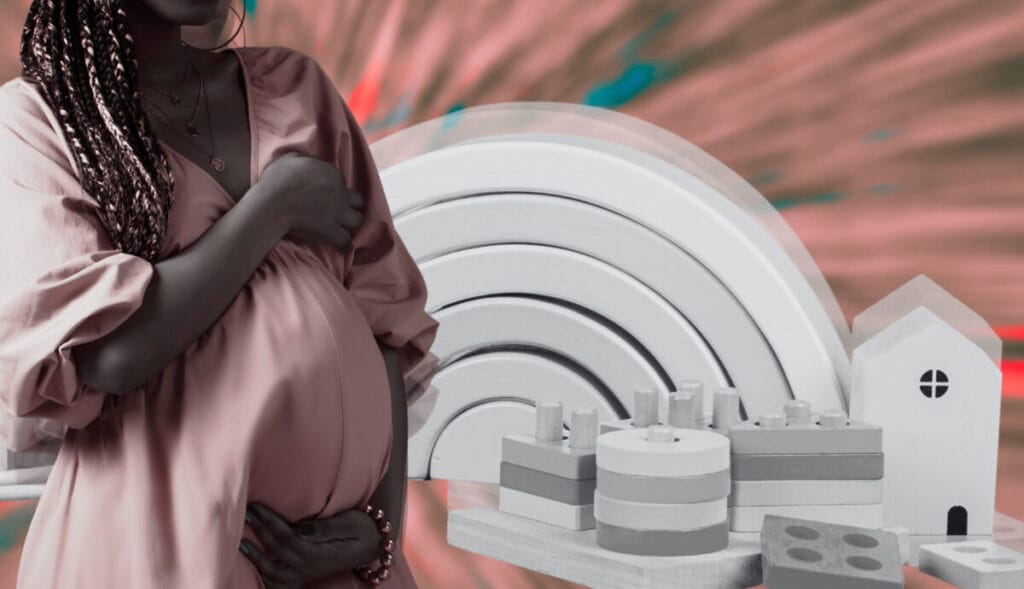
Societal Expectations of Femininity and Motherhood: Safety Concerns
The societal expectations tied to femininity and motherhood can significantly influence women engaging with psychedelics, similar to how men navigate their own situations and societal pressures. These norms shape our human experiences, create additional burdens, and contribute to safety concerns and stigma surrounding psychedelic use. Women may sense societal pressure to conform to traditional gender roles, limiting their willingness to explore psychedelic experiences. Fear of judgment and stigmatization, along with challenges reconciling maternal responsibilities, can constrain their ability to fully embrace the therapeutic potential of psychedelics.
Moreover, internalized notions of femininity can lead to self-doubt, fear of losing control, or concerns about expressing vulnerable emotions during psychedelic experiences. Women may grapple with the balance between societal expectations and personal growth, inhibiting their ability to surrender to the psychedelic experience.
Sexual Assault in Psychedelic Spaces
The issue of sexual assault in psychedelic spaces has garnered significant attention in recent years, with instances of misconduct and exploitation reported within the community. Such incidents harm individuals and contribute to the stigmatization and fear surrounding psychedelic compounds. These concerns further emphasize the importance of providing safe and supportive settings, prioritizing consent and boundaries, and promoting gender equality.
While psychedelics hold tremendous therapeutic potential, the occurrence of sexual assault within psychedelic spaces remains a disturbing reality. Addressing conscious consent, creating safe environments, and implementing policies to prevent and respond to assault are crucial steps in fostering a culture of safety and respect.
After movements like #MeToo, female-only spaces have become safe havens for women to explore psychedelic experiences without fearing male dominance and sexual assault. These spaces provide a supportive and empowering environment, allowing women to navigate their journeys free from the constraints of societal expectations and potential gender-based harm. Such spaces recognize the importance of reclaiming agency, voice, and autonomy for women within the psychedelic realm.
The Rise of Women-Only Retreats
Women-only retreats create a unique and transformative space for women to explore their inner worlds, cultivate deep connections with one another, and embark on journeys of self-discovery and healing. Such retreats provide a safe space where participants can fully embrace vulnerability. The absence of men often fosters an environment where women feel more comfortable sharing their deepest fears, hopes, and emotions. This sense of safety encourages authentic exploration and expression during psychedelic experiences, helping women ‘take up space’.
Women-only retreats tend to nurture a profound sense of sisterhood and community. The shared experiences, both during and between psychedelic sessions, can forge lasting bonds and connections. These connections often lead to a deep sense of belonging and support, facilitating sustained relationships beyond the retreat experience.
Women-only retreats also provide participants with the opportunity to explore and reclaim their narratives and identities. Many women join these retreats with experiences of societal and cultural expectations, traumas, and limitations. Psychedelic experiences within this supportive environment can pave the way for self-liberation, empowering women to redefine themselves and their place in the world on their own terms.
Many of these retreats often focus on the exploration and celebration of feminine energy and aspects of the self. This journey can be deeply healing, helping women reestablish a connection with their inner wisdom, intuition, and creativity. Additionally, it can foster a deeper appreciation for the unique strengths and qualities that women bring to the world.
Held frequently in natural settings, many women-only retreats incorporate rituals and ceremonies. Reconnecting with nature and participating in rituals can deepen the psychedelic experience, helping participants feel more in tune with the cycles of life and the natural world. This reconnection can be both spiritually and emotionally enriching, assisting many women in reconnecting with the cycles of their bodies.
In her role as a psychedelic facilitator, Jessika has witnessed women emerging from these retreats with a newfound sense of purpose, self-love, and empowerment. This unique quality of women-only retreats lies in their ability to provide a nurturing and transformative space where women can explore the depths of their psyche, connect profoundly with others, and emerge as stronger, more authentic versions of themselves.
Designing Just for Women
Innovating with women-centered design in mind calls for products and services to be designed for, with, and by women, based on their specific needs. It also requires clearly conveying and enforcing guidelines for respectful communication, boundaries, and consent throughout the process.
The world we live in has been shaped by designers, and it is noteworthy that the creative industry, responsible for much of this design, tends to be male-dominated.
The seatbelt serves as the most cited example of a product designed for men but commonly used by women for safety. Using crash test dummies based on average male sizes and weights has resulted in significant safety disparities for women, making them 73% more likely to be injured in a car accident. Beyond physical safety concerns, women face ongoing challenges related to everyday comfort and practicality. Consider the dilemma faced by pregnant women when deciding whether to position the seatbelt above or below their bellies. Another everyday example is the smartphone, tailored for the average male hand, and transforming into a cumbersome object in the grasp of the average woman.
Taking into account the significant impact of these design hurdles on women’s lives, it warrants a thoughtful approach to designing specifically for women in the context of mind-altering substances. Jemma Campbell, head of U.S. creative of Moving Brands, notes “It is very easy to think that design is aesthetics and aesthetics alone. Design is about much more than aesthetics – it’s about solving real-world problems and improving lives. When done right, it gives brands the ability to build connections with people much like human relationships.”
Focusing solely on aesthetics and neglecting research, strategy, and the overall product experience means you might project your own perspective, adopt codes rooted in learned behaviors and societal norms, and follow cues that may not lead to the best solutions.
“So, when it comes to creating women-only spaces for psychedelic treatment, when patients may feel vulnerable and exposed, we need to fully understand and reflect their unique needs and experiences. And that means women designers must not only be involved – they must be leading the vision,” Campbell says.
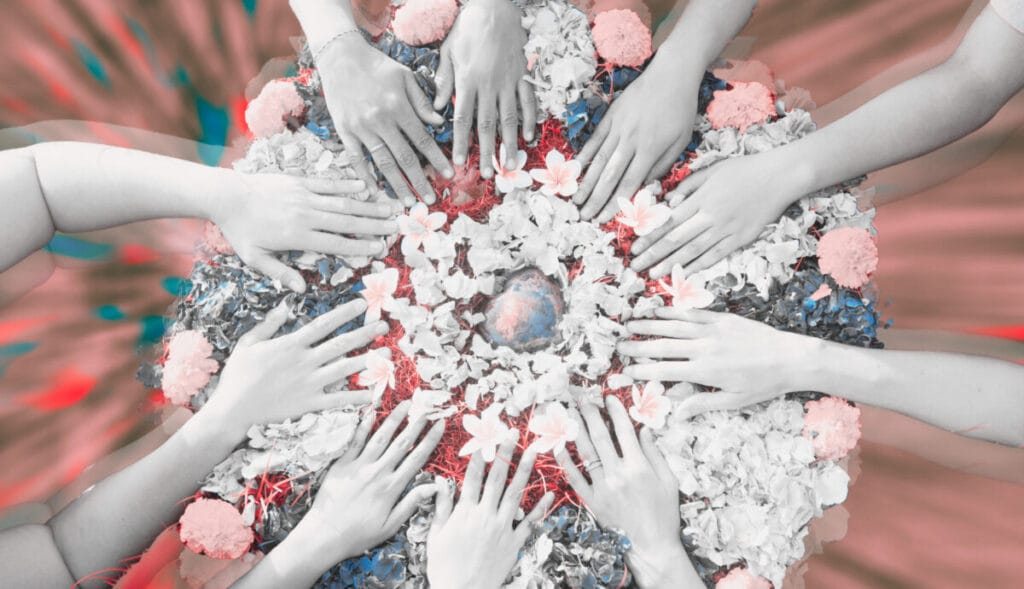
Key Considerations in Psychedelic Design for Women
Include More Female Designers, Scientists, Researchers, and Engineers
Women buy or influence 85% of all consumer purchases, control 73% of household spending, and make 69% of household health decisions. However, research consistently demonstrates that women are not satisfied with the product and service innovations offered to them. One possible reason: 85% of product designers and engineers are men. In areas like healthcare, where setting and environment are critical, designing with empathy is vital. It’s what makes having diverse design teams so important. Therefore, actively seek the involvement of more female designers, scientists, researchers, and engineers. Diverse teams bring a broader range of perspectives and insights, essential for understanding and meeting the unique needs and preferences of women consumers.
Listen and Learn
Cultivate a culture of inclusivity and diversity within design teams, fostering an environment where women from diverse backgrounds feel comfortable sharing their perspectives and experiences. Actively listen to their feedback, concerns, and ideas, and use this input to drive innovation and product development. Establish a safe and confidential space where women can share without judgment or fear of repercussions. Start small and build it organically.
Increase the representation of women in leadership positions and decision-making roles within design and engineering teams. When women have a seat at the table, they can advocate for designs and innovations that better resonate with female consumers.
User-Centered Design
Prioritize user-centered design principles, ensuring that products and experiences are designed with women in mind. Conduct thorough research to understand their needs, preferences, and pain points, involving women from diverse backgrounds and age groups. The experience doesn’t commence solely upon entering a clinic, retreat space, or product use; it begins with communication. For instance, inviting individuals to observe a retreat to ease them in or incorporating controlled microdosing to facilitate their entry could be part of designing the overall experience.
Collaboration
Collaborate with women’s organizations, advocacy groups, and female-focused communities to gain insights and build strong connections with potential users. These collaborations can lead to valuable co-creation opportunities.
In an ideal healthcare scenario, we envision truly bespoke care tailored to individual needs, irrespective of gender, becoming the norm. While acknowledging the historical challenges and potential future obstacles, we, as professionals, understand the complexities. Yet, as women, we recognize the oversight of subtle but crucial distinctions in female bodies and systems. The lingering patriarchal influence in Western research, product, and system development is a fact. We are now on the journey toward equal opportunities. Undertaking specialized research, embracing user-centered design, and holding space to heal past trauma, we hope to see a more inclusive and supportive psychedelic landscape, where everyone’s distinct needs and perspectives receive the recognition and respect they deserve.
